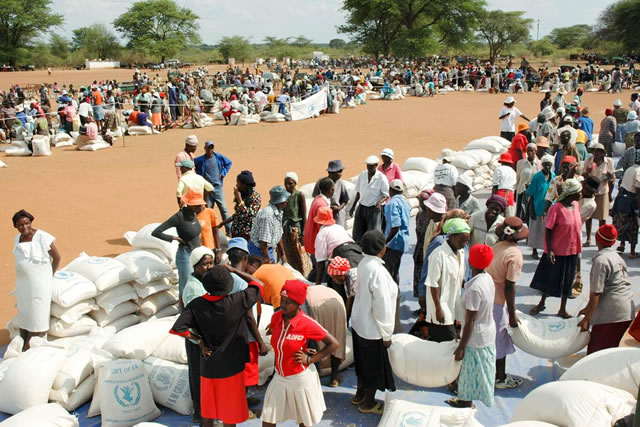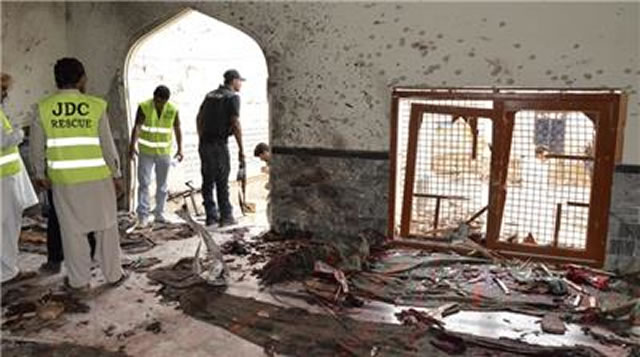Let’s prepare for food shortages

 Opinion Saul Gwakuba Ndlovu
Opinion Saul Gwakuba Ndlovu
Today is the end of January, and we are left with two rainy season months, February and March, during which some crops in some regions of Zimbabwe will be maturing.Matabeleland and parts of the Midlands have received relatively poor rains up to now, and it is most unlikely that the two regions will have any significant rain in the two months.
That is because the inter-tropical convergence zone is now hovering over the Nyika Plateau in northern Malawi and southern Tanzania, thousands of kilometres away from our geographical region.
Meanwhile in Mashonaland, Manicaland and Masvingo, some areas received much rain. In fact, a couple of localities had floods in the Zvimba and Mutoko communal lands.
Matabeleland is bound to have a high food deficit, so will some parts of the Midlands and even Masvingo although not as much as Matabeleland.
Zimbabwe has had several, if not many, droughts since independence and the government has had to take rather hasty contingency measures to procure food for the people.
We can vividly remember groups of people desperately running after trucks loaded with mealie- meal along Bulawayo streets and avenues in the 1990s and early 2000s.
The situation became so desperate that the basic staple food of the masses was extremely scarce and some unscrupulous people hoarded it and sold it at exorbitant prices. Some funeral parlours in Bulawayo stocked and sold some mealie-meal.
In Makokoba suburb, one shop somehow got sorghum mealie-meal offered to Zimbabwe as a gift by the United States government, but was selling it. That was in spite of the fact that the mealie-meal packs were clearly written “A gift from the people of the United States to the people of Zimbabwe.”
Well, that experience came and passed. We are now likely to face another food shortage. What preparatory measures can the government take now instead of waiting for the problem to break upon the country as a crisis?
The relevant government authorities should liaise with district administrators with the aim of establishing which districts will need assistance.
The district administrators should instruct chiefs to submit the number of people most likely to need food aid. Chiefs would instruct their headmen to carry out surveys in their respective areas and submit the relevant statistics. Those facts and figures can be used to seek food aid at home and abroad.
Political party officials should not be involved in food procurement, storage or distribution for very obvious reasons. Only bona fide civil servants and traditional leaders should be involved in such projects.
Traditional leaders (osobhuku, headmen and chiefs) are less likely to be corrupt and can, therefore, be involved in the storage of the food supplies just before distribution. It would be most ill-advised to involve business people in any stage of such projects as some could be tempted to divert some of the commodities to their businesses.
It would not be advisable as well to involve councillors or Members of Parliament because some of them may become partisan in the distribution of the stuffs, and some may use it to bribe people to support them either as individuals or as party representatives.
Meanwhile, while we are looking at how and where to store and distribute food aid, we should always remember that it is much better and safer to be self-reliant than to depend on aid whatever its source.
Matabeleland, the Midlands, parts of Masvingo and Manicaland are an extension of a rather dry climate-ecological region that covers the Karroo in the Cape, the former Griqualand and the former British Bechuanaland, Botswana, the Northern Transvaal (now Limpopo Province) parts of western Mozambique, Zambia’s Western Province and Eastern Namibia.
It is not a maize-growing region (unless by irrigation) but is suitable for drought resistant grains such as millet (zembwe, mhunga, inyawuti) and sorghum (mapfunde, amabele). The present trend towards growing and consumption of maize is unrealistic in terms of both the little rain and poor soil in this region.
People who grow millet, sorghum, melons, red beans and the small type of monkey-nuts (kanjenje, tjinongwana) are able to harvest reasonable quantities even when there have been meagre rains.
Maize is suitable for Mashonaland Central, Mashonaland West, Mashonaland East and some parts of Manicaland, certainly not Matabeleland.
Another piece of advice is to plant early, whatever the crop. That is why the Kalanga people say: “Watjenjelela vula ndewayitangila.
(The one who has taken advantage of the rain is the one who has planted before it has fallen.) That saying was born out of long experience.
Saul Gwakuba Ndlovu is a Bulawayo-based retired journalist. He can be contacted on cell 0734328136 or through email [email protected]











Comments